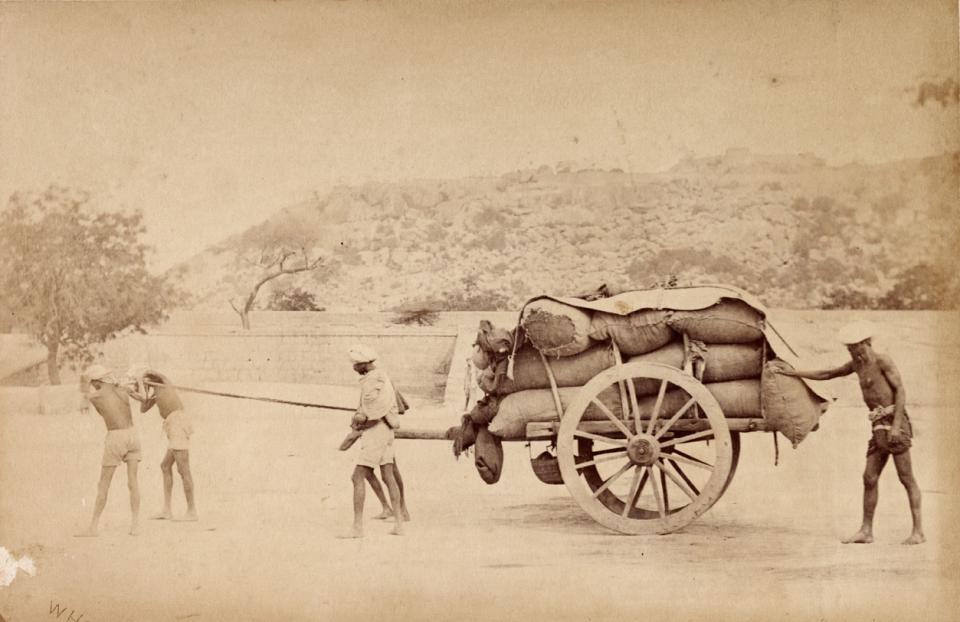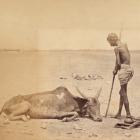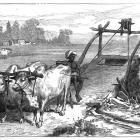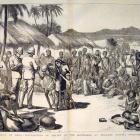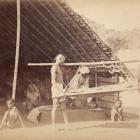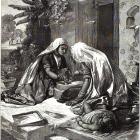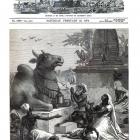Changing land ownership, agricultural, and economic systems
Changes in land ownership and control affected how crop failures impacted human lives. Before the British colonial period, Indian agriculture was dominated by subsistence farming organized in small village communities. The farmer usually only grew enough food to feed himself and the non-agricultural people of the village community. When his crop production exceeded consumption because of favorable climatic conditions, he stored the surplus for use in lean years. The storage of food grains constituted the only remedy against famines and other crises.
At the end of the eighteenth century, village communities began to disband under the pressure of new forces. The permanent land settlement of Lord Cornwallis in 1793 impacted Bengal, Bihar, and Orissa, and later extended to North Madras, forming a class of zamindars, a social elite group with the right to collect tax. The zamindars became landlords in perpetuity and were the intermediaries between the colonial rulers and the peasantry. Peasants were required to pay fixed amounts of money to the zamindars. Most of the cultivators became landless laborers: the magnitude of rural poverty was graphically described in the adage that the Indian is born in debt to the moneylender.1 To pay taxes to the government, the peasants had to borrow from the moneylender, compounding the problem because indebted peasants could not be agricultural producers.
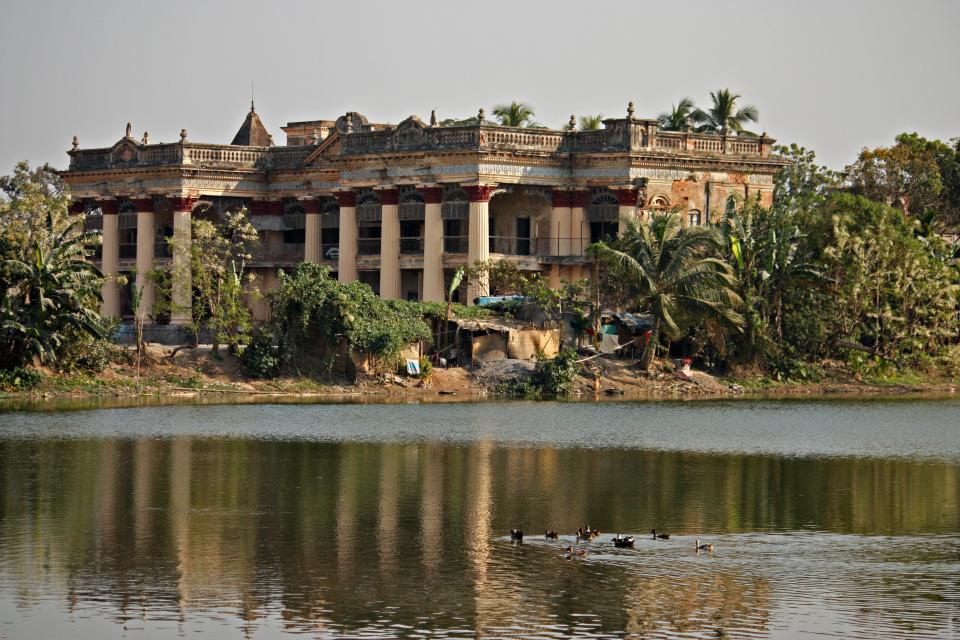
A zamindar´s palace in Puthia district is being restored
A zamindar´s palace in Puthia district is being restored
2011 Courtesy of Lamentable
View source.
 This work is licensed under a Creative Commons Attribution-NonCommercial-ShareAlike 2.0 Generic License.
This work is licensed under a Creative Commons Attribution-NonCommercial-ShareAlike 2.0 Generic License.
Economic Theorists and British Colonialism in India
Karl Marx saw colonial India as a good example for his critique of modern capitalism. In “The Consequence of British Rule in India,” Marx described the forced transformation of Indian agriculture and the resulting “destruction of the self-sufficient village society of India. Under this simple form of municipal government, the inhabitants of the country have lived from time immemorial. These small forms of social organization have been for the most part dissolved, and are disappearing, not so much through the brutal interference of the British tax-gatherer and the British soldier, as to the working of English steam and English free trade.”2 Marx is not the only economic theorist often cited in discussions of Indian famines. Scholars frequently emphasize laissez-faire capitalist theories stemming from Adam Smith’s Wealth of Nations; as well as Malthusian ideas about population, whereby famine was regarded as a natural check to overpopulation (with the unspoken benefit that it relieved imperial government from the responsibility of expenditure on relief).3
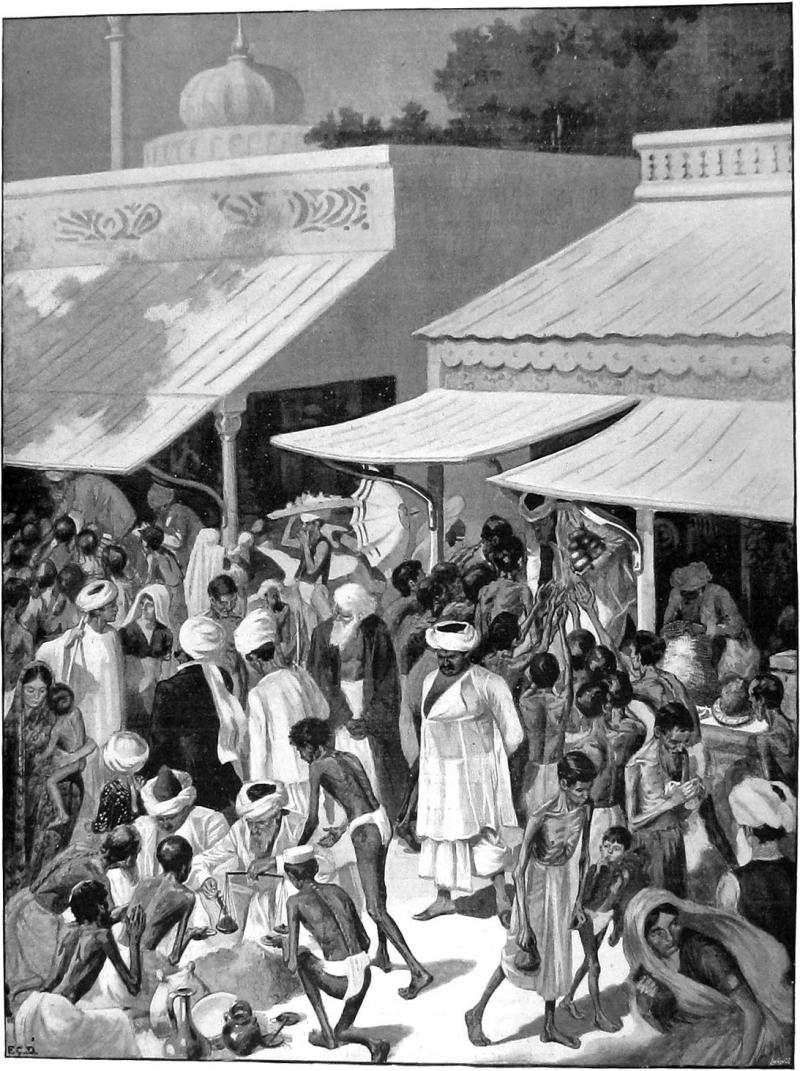
Shortages in food supply led to rising prices – to bunniahs’, grainsellers’, advantage.
Shortages in food supply led to rising prices – to bunniahs’, grainsellers’, advantage.
Drawn by F. C. Dickinson, The Graphic 27 Feb 1897, p. 248.
 This work is licensed under a Creative Commons Public Domain Mark 1.0 License.
This work is licensed under a Creative Commons Public Domain Mark 1.0 License.
Changes in land ownership were followed by the commercialization of agriculture, which started to emerge around the 1860s. This brought a shift from cultivation for home consumption to cultivation for the market. Cash transaction became the basis of exchange and largely replaced the barter system. The exported items in the first half of the nineteenth century included cash crops like indigo, opium, cotton, and silk. Gradually, raw jute, food grains, oil seeds, and tea replaced indigo and opium. Raw cotton remained in demand throughout. There was phenomenal growth in the export of agricultural commodities from India: the value of India’s exports is estimated to have risen by more than five hundred percent from 1859–60 to 1906–1907.
The greater portion of the profits generated by the export trade benefitted British business families, big farmers, some Indian traders, and moneylenders.
This put rural Indian communities at greater risk of damage due to famine because agriculture, which had previously been used to meet local needs, was now controlled from afar with the goal of profit rather than subsistence.4 Further, the shift from food crops like jowar, bajra, and pulses to cash crops contributed to disaster in famine years.5 Many scholars argue a close link between food exports and famine in India. In fact, there was an increase in agricultural exports from Indian farmers during the British colonial time.6 Even in 1876–77, just before one of the century’s most severe famines, exports continued to grow to meet Land Revenue demand.7 And again in 1897–98, in the midst of widespread famine and starvation in India, the system continued: 17 million sterling of land revenue was collected; cultivators raised the money largely by selling food grains for export.8
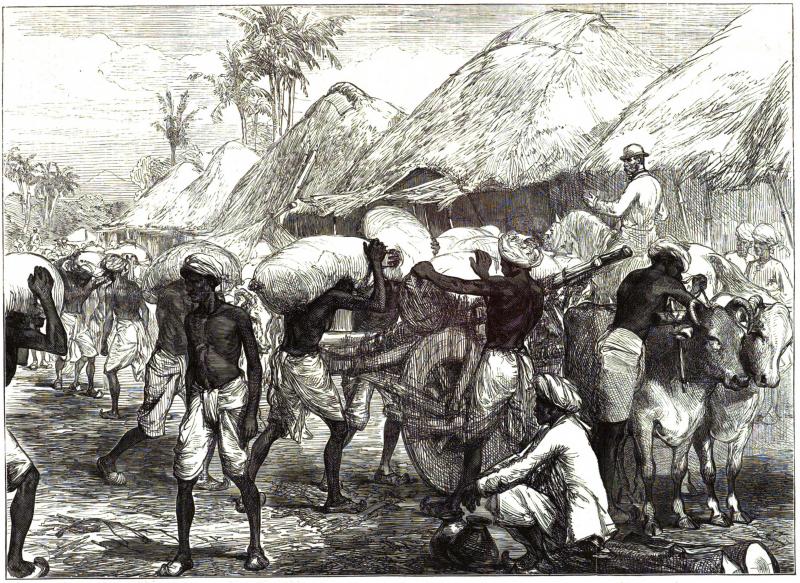
The famine in Bengal: Loading grain-carts near Calcutta
The famine in Bengal: Loading grain-carts near Calcutta
Drawing by unknown author. The Illustrated London News 25 April 1874. Digitized as part of the Google Book Search project.
 This work is licensed under a Creative Commons Public Domain Mark 1.0 License.
This work is licensed under a Creative Commons Public Domain Mark 1.0 License.
Reports made by the Famine Commission in 1880, 1898, and 1901 provide useful evidence to examine these events and suggest that food grains were present even during years of famine. The Famine Commission of 1880 provided the first attempt to measure the food supply in the country and the food requirements of the people.9 According to these measures, British India around 1880 produced a surplus of 5 million tons of food grains that were available for storage, export, or luxury consumption. Further, each region of India grew surplus food grains.10 The Famine Commission of 1898 again made fresh estimates of food supply near 1880, and considered the growth of population and acreage under food grains during the period 1880–98. The report concluded that “the surplus produce of India, taken as a whole, still furnishes ample means of meeting the demands of any of the country likely to suffer from famine at any one time, supposing such famines to be not greater in extent and duration than any hitherto experienced.”11 The measures of surplus production given by the Famine Commission of 1880 show that food grain exports did not actually wipe out the surplus in normal years.
Moreover, food grains export continued throughout the years of severe famine. Many observers have thus concluded that if there was an absolute shortage of food in those years, then this was largely a created shortage and cannot be attributed to natural disasters.12
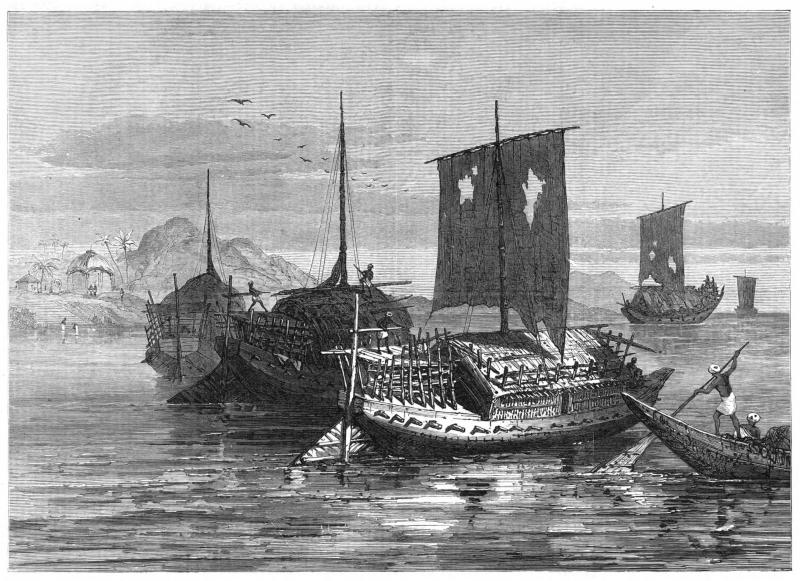
The famine in Bengal: Grain-boats on the Ganges
The famine in Bengal: Grain-boats on the Ganges
The Illustrated London News 21 March 1874. pp. 281. Digitized as part of the Google Book Search project.
 This work is licensed under a Creative Commons Public Domain Mark 1.0 License.
This work is licensed under a Creative Commons Public Domain Mark 1.0 License.
These Famine Commission Reports suggest that impacts of famine in British India were not due to lack of food, but were instead caused by inadequate food supply; one expert has thus distinguished between two types of famine: a “grain famine” and a “money famine.” In a money famine, it is a lack of capital—not crop failure—that makes it impossible for peasants to procure food. In another formulation that has been used, famine is the characteristic of some people not having enough food to eat; it is not the characteristic of there not being enough food to eat.13 Famines also are triggered by a lack of rainfall, but their impact is largely a result of chronic poverty. With greater wealth, people could compensate for crop failures in one area by buying food from elsewhere; crop failure would thus not necessary lead to starvation. Without financial resources, however, this is not possible and local crop failure can have deadly consequences for a large number of people.14
1 R. Dutt, The Economic History of India (New Delhi: Publication Division, Ministry of Information and Broadcasting, Government of India, 1960), vol. 1, 1–11, 127–75, 255–75, and vol. 2, 22-70; R. C. Majumdar, H. C. Raychaudhary, and K. Datta, An Advanced History of India (Madras: Macmillan India Limited, 1981), 794–6.
2 K. Marx. “The British Rule in India.” New-York Daily Tribune, June 25, 1853.
3 J. Caldwell. “Malthus and the Less Developed World: The Pivotal Role of India,” Population and Development Review 24, no. 4 (December 1998): 675–96; E. Stokes, The English Utilitarians and India (Oxford: Oxford University Press, 1959).
4 Ibid.; Dutt. The Economic History of India, vol. 1. 284–92, and vol. 2. 90-101, 252, 385; D. Naoroji. Poverty and British Rule in India (London: Swan Sonnenschein & Co, 1901); B. N. Ganguli, Dadabhai Naoroji and the Drain Theory, (Bombay: Asia Publishing House) 1965.
5 See note 4; M. Davis, Late Victorian Holocausts: EI Niño Famine and the Making of the Third World (London: Verso Books, 2001).
6 Ibid., 63, 31–32, 290, 319.
7 Dutt. The Economic History of India, vol. 2.
8 Ibid.
9 K. C. Ghosh, Famines in Bengal, 1770–1943 (Calcutta: India Associated, 1944), 374, Table 1.
10 Ibid., 374.
11 The Indian Famine Commission, Report (Calcutta: Office of the Superintendent of Government Printing, India, 1898) 358, cited by A. K. Ghose, “Food Supply and Starvation: A Study of Famines with Reference to the Indian Subcontinent,” Oxford Economic Papers, New Series 34, no. 2 (1982): 376.
12 Ibid.
13 This mode of description is used by Nobel laureate Amartya Sen in the book Poverty and Famine: An Essay on Entitlement and Deprivation (Oxford: University Press, 1981) 1.
14 Ibid; Dutt. The Economic History of India, 34; D. Arnold, Famine: Social Crises and Historical Change (London: Basil Blackwell, 1988), 44–5 and 85.


